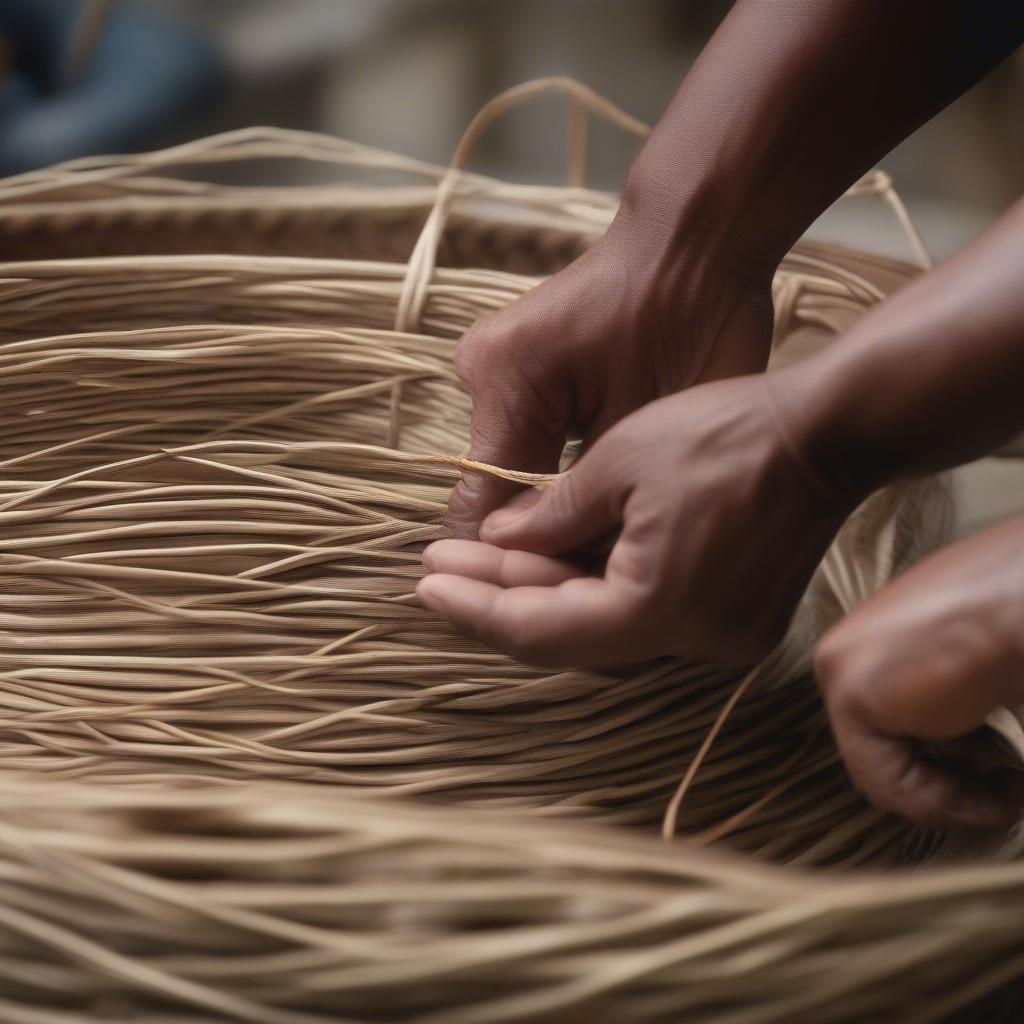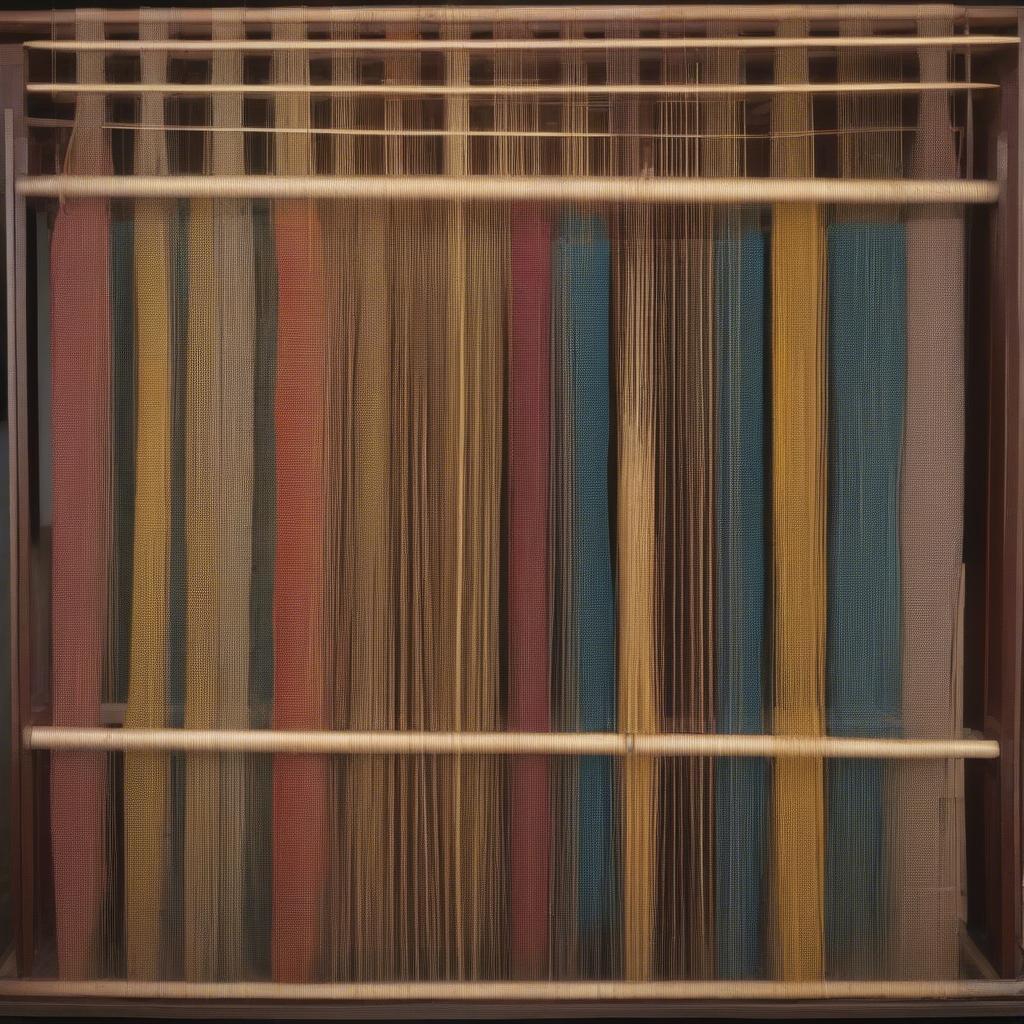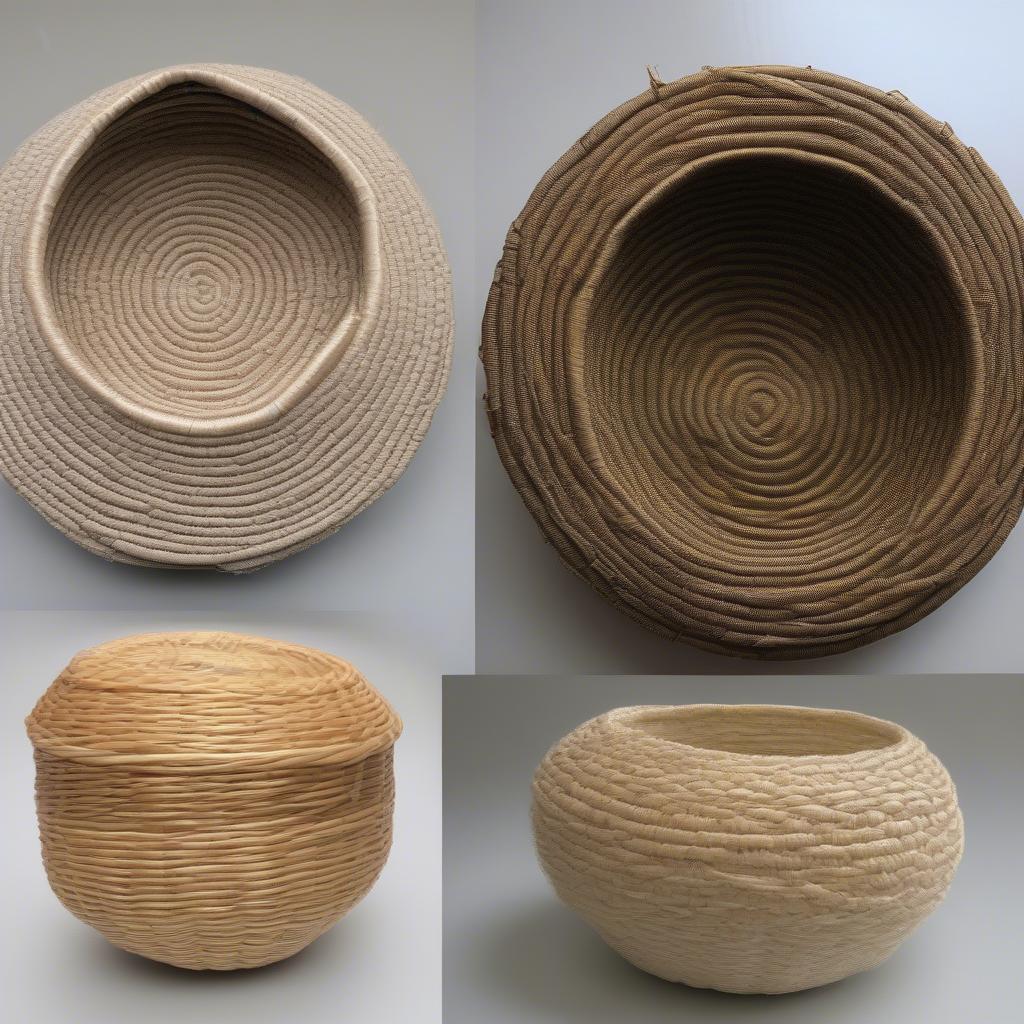Basket Weaving
What Are Two Different Techniques for Basket Weaving?
Basket weaving, an ancient craft, offers a captivating blend of artistry and practicality. This article explores two distinct basket weaving techniques, providing insights into their unique characteristics and applications. We’ll delve into the world of woven wonders, from simple coils to intricate twining, unveiling the secrets behind creating beautiful and functional baskets.  Coiling Basket Weaving Technique
Coiling Basket Weaving Technique
Exploring Coiling: A Foundation of Strength
Coiling is a fundamental basket weaving technique that relies on a continuous spiral foundation. This foundation is created by coiling a flexible material, such as grasses, reeds, or even yarn, upon itself. A separate, stronger material, often referred to as the binder, is then used to stitch the coils together, securing the structure and shaping the basket. This technique is ideal for creating baskets with a strong, sturdy base and can be adapted to create a variety of shapes and sizes. From small, delicate trinket baskets to large, robust storage containers, coiling offers endless possibilities for the creative weaver. For those interested in getting started with basket weaving, a square basket weaving craft kit can provide the necessary materials and instructions.
“Coiling offers a fantastic entry point for beginners,” says renowned basket weaver, Amelia Reed. “The repetitive nature of the stitching allows for a meditative experience while building a solid understanding of basket construction.” Coiling lends itself to bold designs and intricate patterns, making it a favorite among both novice and experienced weavers.
Delving into Twining: An Art of Interwoven Beauty
Twining, another prominent basket weaving technique, involves weaving flexible materials over and under a rigid framework. Unlike coiling, twining requires a pre-existing structure, often created from sturdy rods or splints. The weaver then uses thinner, more pliable materials, such as willow or cane, to weave around these rods, creating an intricate and visually appealing pattern.  Twining Basket Weaving Method
Twining Basket Weaving Method
Twining allows for a greater degree of complexity in design and pattern. The weaver can manipulate the over-under sequence of the weavers to create intricate textures, geometric designs, and even representational imagery. This technique is particularly popular for creating decorative baskets, as well as functional pieces like fish traps and cradles. This technique offers opportunities to explore various basket weaving examples.
“The beauty of twining lies in its versatility,” explains master weaver, Ethan Willowbrook. “The interplay of the weavers and the framework creates an almost limitless canvas for artistic expression.” Twining offers a rewarding challenge for those seeking to push the boundaries of basketry.
Comparing Coiling and Twining: A Closer Look
| Feature | Coiling | Twining |
|---|---|---|
| Foundation | Continuous coil | Rigid framework |
| Materials | Flexible and binder | Flexible weavers and rigid framework |
| Complexity | Beginner-friendly to advanced | Intermediate to advanced |
| Design Potential | Sturdy, bold designs | Intricate patterns, textures |
| Examples | Storage baskets, bowls | Decorative baskets, fish traps |
If you’re interested in pursuing basket weaving further, you might consider a basket and weaving degree to hone your skills. You might also explore the intersection of different art forms by combining pottery and basket weaving.
 Comparing Coiling and Twining Basket Weaving Techniques
Comparing Coiling and Twining Basket Weaving Techniques
Conclusion: A World of Woven Possibilities
Understanding the nuances of different basket weaving techniques, such as coiling and twining, unlocks a world of creative possibilities. Whether you’re drawn to the sturdy simplicity of coiling or the intricate beauty of twining, basket weaving offers a rewarding journey of artistic exploration and practical craftsmanship. You can even use a basket template for weaving to get started.
FAQ
- What materials are best for coiling? Natural fibers like grasses, reeds, and even yarn are excellent choices.
- Is twining more difficult than coiling? Twining generally requires a bit more practice and precision due to the framework element.
- Can I combine coiling and twining in one basket? Absolutely! Many weavers combine techniques to create unique and intricate designs.
- What are some common uses for twined baskets? Twined baskets are often used for decoration, storage, and even fishing.
- Where can I learn more about basket weaving? There are numerous resources available online, including tutorials, books, and even online courses.
Common Scenarios and Questions:
- Scenario: A beginner weaver is unsure which technique to start with. Question: Which basket weaving technique is easier for beginners, coiling or twining?
- Scenario: An experienced weaver wants to create a basket with a specific pattern. Question: Which technique offers more control over intricate patterns and designs?
- Scenario: Someone is looking for a basket weaving technique to create a sturdy storage container. Question: Which technique is best for creating strong and durable baskets?
Further Exploration:
For more information on different basket weaving techniques and projects, explore these additional resources:
- Basket Weaving for Beginners: A Step-by-Step Guide
- Advanced Twining Techniques for Basketry
- 10 Creative Basket Weaving Projects to Try at Home
When you need assistance, please contact our hotline at +84 388 951 999, our Hanoi, Vietnam office, or our US office located at Tech Avenue, Suite 12, San Francisco, CA 94105. We have a 24/7 customer support team.
